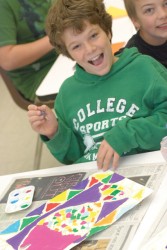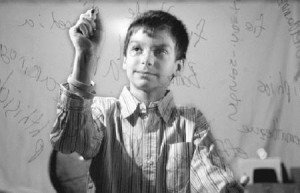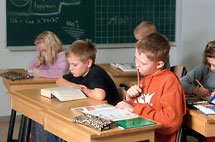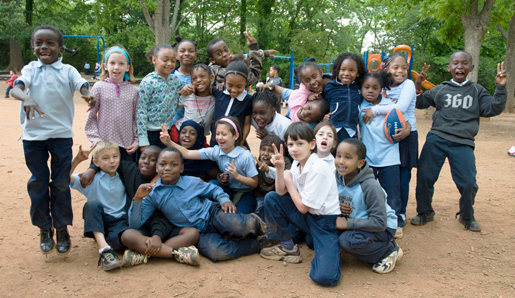School Leadership Briefing Audio Journal
and
Professional Development for Administrators
is an online journal for school leaders and this month they are playing an interview Kathleen Sciarappa where she described the NAESP Mentor Program.
If you received the NAESP Principal Common Core Survey, please take a few minutes to complete and submit your responses. We surveyed principals regarding their needs,progress, and concerns about implementing the Common Core State Standards.
The survey was sent out to several states.
Watch for results! Thanks!
|
Visit our Website
www.edimprovement.org
where we have a library that includes previous editions of Wow! Ed
|
|
To help us meet your needs, please send an email with answers to the following questions:
1. Primary concern or need: 2. Proposed dates of service:
3. # of teachers:____
4. What you expect from CEI:
|
|
Editor:
Carolyn Lieberg, M.A. |
|
Contact Information
To be removed from this email list please send an email with the header
|
|
|
Dear Educator,
With the current emphasis on academic achievement, what is happening with programs for our brightest students? Some districts are eliminating these programs to focus on raising academic achievement for all. Does it make sense to simply integrate the best practices for gifted students into practices for all students? Do students at the top get enough support and encouragement with this approach? What is happening internationally? Is "giftedness" bound by cultural values? Could the U.S. learn from other countries? And what about individuals with twice exceptionalities (gifted and a disability of some sort)?
In this issue of Wow! we look at the concept of a "superculture" that transcends the cultural values of individual countries. We also examine some of the best practices for students who are gifted with Asperger's, look at the International Baccalaureate program, and draw a few conclusions related to giftedness and 21st Century learning.
|
| | Twice Exceptional Children - Considerations for Teachers, Other School Staff, and Principals
|
By Suzan Mullane, MS Ed
"Asynchrony--a word used to describe a lack of temporal occurrence." For the twice-exceptional child who has had rapid intellectual development with lagging social emotional maturation or learning disabilities, the feelings of disconnect can feel disheartening; just getting through the day can be tough for all involved (Probst, 2007).
Students who are "twice exceptional" may have above average intellect but also other health-related impairments such as ADHD, OCD, or learning disabilities that require special education.

How many students are twice-exceptional? National prevalence data on twice exceptionalities is lacking. The most recent data was conducted in 2007, by the U. S. Department's Digest on Educational Statistics, and for districts that were tracking and reporting, there were approximately 70,000 students identified as twice exceptional (WrightsLaw), students who fit the definition of gifted in their local districts and who met the criteria of IDEA: "A disorder in one or more of the basic psychological processes involved in understanding or in using language, spoken or written, which may manifest itself in an imperfect ability to listen, speak, read, write, spell, or to do mathematical calculations."
In rare cases educators, speech therapists or the school nurse may encounter a student who does not speak beyond basic needs or socially engage. And yet that same student may be captivated by math problems or a subject he is passionate about. Sammy, a 3rd grader in Virginia, baffled his speech therapist because he did not want to engage in conversation outside of explaining how algebraic algorithms work. Solution? Teach him physics, or find someone to teach him physics--the language of math. The goal? Motivate Sammy to talk. Here is where personalized learning becomes concretely evident to the survival of a student. Granted, autism savants are rare, but Sammy illustrates the conundrum of reaching the twice-exceptional student academically and pragmatically where they are. Fortunately for him, school volunteers were found to teach him physics. (See the 60 Minutes clip on Jake Barnett.)
Gifted students of all different abilities and sometimes disabilities are at times perceived to have an abundance of natural emotional resilience because they're smart. Not true. Many are very lonely as they grow (Loneliness & Friendships).
Finding like-minded students who share academic interests can go a long way in building a positive school climate. Lonely students who are gifted, with Asperger's, will sometimes gravitate to adults. Perhaps that is why the gifted student with Asperger's can be a "frequent flyer" to the school nurse with somatic complaints in an effort to find a safe haven from the lunch social hour. And why not? Intelligent, compassionate with a background in science and human anatomy, the school nurse makes for a great school buddy.
The diagnosis of "gifted Asperger's" has sadly been part of the national conversation because of the Sandy Hook tragedy. Whether Asperger's can preclude a student to premeditated violence has been a point of news media speculation. Simply put, Asperger's does not preclude children and youth to premeditated violence. Are their social risks to having Asperger's? Yes, according to the Kennedy Krieger Institute up to 65% of students with Asperger's are bullied (Anderson, 2012).
Oftentimes, students silently suffer with no intervention. Asperger's is not a form of mental illness nor does it preclude children and youth to mental illness. Nevertheless, it is prudent to recognize that social supports in the form of best practices for schools need to include all students, especially vulnerable children, and the twice-exceptional student is no exception. In an effort to increase awareness of autism and gifted Asperger's it is essential for all stakeholders to understand that certain exceptionalities like autism share certain learning needs and characteristics. The question is in degree. With intervention, significant gains can be made to ameliorate academic and social deficits. The first step is a greater awareness to alleviate misunderstanding. *
Academic strengths and weaknesses can be statistically significant for the gifted student with Asperger's; processing speed can be slow as well as legibility in handwriting and working memory, yet some students have an extraordinary ability to synthesize information with articulate creativity. Sadly however, the paradox of being gifted or twice exceptional often leads to creative gifts being masked by deficits. Some students fly under the protective radar of gifted services or even a special education IEP. In other words, twice-exceptional students can survive in the mainstream with their gifts and weaknesses albeit limited opportunity to work to their full potential (Assouline, et al.). Consider the challenges of giftedness without autism spectrum disorders or other disabilities (ASD).
Instructional Supports
Since students with Asperger's tend to be visual learners, they can be challenged by processing language and do better with hands-on activities. These students also might stare off into space or doodle during verbal exchanges. These behaviors should not be assumed to signify that the student is not paying attention. Doodling has been shown to be a way of retaining information for people with conventional brain structures, too.

It is not uncommon for students with Asperger's to bring great focus to an area of interest. Rather than attempting to steer students away into other topics, there can be a benefit in finding ways to use their passion about a topic as a bridge to expand learning horizontally while allowing them to stay in the verticality of the subject.
If students are experiencing sensory overload, the task is to work with those who understand the student's sensitivities and ameliorate the situation in the school environment as much as possible.
More on Prevalence
Researchers have estimated that two to five percent of the gifted population will have disabilities. In turn, two to five percent of the students with disabilities may be gifted. Fortunately, districts nationwide are becoming more aware of twice exceptionalities, in part because of increased parental advocacy and the prevalence of autism spectrum disorders (ASD). Currently 1 in 88 students is being identified with ASD according to Autism Speaks; but how many students with autism meet the criteria of gifted is not known. Historically however, US schools have not done an adequate job in identifying twice-exceptional students across disciplines (Dix & Schafer, 1996; Maker, 1977; and Whitmore, 1980). But this situation seems to be changing-and for the better for all.
Considerations for Principals
Perhaps as you reviewed these stories and descriptions, several students in your school came to mind. For classroom teachers, the challenge is how to engage students at the appropriate level and provide adequate supports to nurture the giftedness as well as modifications or accommodations to meet the unique needs of the child. For the principal, the challenge is how to identify these students, ensure that teachers are adequately prepared to modify instruction to support these students, and also how to provide other necessary supports or accommodations throughout the school. Supports may be needed on the bus, in the cafeteria and on the playground, and those supports would include aids to building social skills as well as managing academic focus and challenges.
To build a bright future for students who are twice exceptional, emotional as well as academic supports are needed. Counseling, after-school activities, and small group instruction, as well as adequate access to activities and learning that address individual students' interests are all important components of schools that really are designed to meet the needs of ALL students, included students who are twice-exceptional.
* In May 2013, the revised and updated DSM-V will be issued with Asperger's included in the Autism Spectrum Disorder section.
References Assouline, S.G. ,Nicpon, M.F, Colangelo,N. & O'Brien, M. (2008) The paradox of giftedness and autism. Iowa City , Iowa: The Connie Belin & Jacqueline N. Blank International Center for Gifted Education and Talent Development, the University of Iowa College of Education. Anderson, Connie (2012) IAN research report: Bullying and children with ASD. Baltimore, MD: Interactive Autism Network. Kennedy Krieger Institute.
WrightsLaw. (n.d.) Twice exceptional children (2e). Online
|
 |
| |
By Suzan Mullane, MS Ed
...failure to help the gifted child reach his potential is a societal tragedy, the extent of which is difficult to measure but what is surely great. How can we measure the sonata unwritten, the curative drug undiscovered, the absence of political insight? They are the difference between what we are and what we could be as a society."
James J. Gallagher
Author, Public Policy in Gifted Education
http://www.sagepub.com/books/Book226623
Want to turn the tide of gifted under-achievement for the twice-exceptional student? Think of an out-of-the box approach. Perhaps the single most proactive intervention is to consider the assessment process for qualifying the twice-exceptional student for gifted services. Gifted children with Asperger's, for instance, might be denied gifted services because they do not:
- test well,
- have the grades,
- filter social situations well,
-
or, tragically, the teachers of the gifted program are fearful and thus the twice exceptional student is denied entry.
Access to gifted services should not be limited to the twice-exceptional student because they have an IEP/ 504 or have a bad testing day. Alternative assessments, formative assessment, and student portfolios might be helpful embellishments to the traditional standardized process in gifted identification. Why?
Primarily, alternative assessments might give the non-traditional gifted student a chance to qualify for gifted education while also providing clues to their teachers for personalized learning. Moreover, formative or alternative assessments offer an in-depth perspective of students' strengths and weaknesses beyond traditional standardized tests for the teaching pedagogy; essentially, a teacher/ student feedback process is created (McManus).

Schools that are implementing best practice standards for students who are gifted with Asperger's are networking; in other words, gifted programs are working in tandem with their special education programs, community volunteers, and teacher coaches in interdisciplinary teams. Inclusion, differentiation, RTI and a steadfast commitment to personalized learning create the backdrop to prepare gifted Asperger kids for the 21st century. A lead teacher also provides support to teachers and parents to increase Hispanic and African-American student participation in rigorous academic subjects for middle school.
One twice-exceptional public school program in Maryland, the Montgomery County Public School, provides an information packet for parents on twice (Gifted/LD) exceptionalities in five languages.Moreover, students have the opportunity to participate in Montgomery's Wings Program where students are mentored based on strengths and interests with community volunteers. (Note that there is an excellent small video about hands-on ART-based cross-curricula mentoring on this site.)
How are schools managing the unique challenges of staff development and accountability? Welcome to the Governor's School in Fredericksburg, Virginia, where every teacher who teaches gifted classes, and many regular educators, have been trained in teaching students with twice exceptionalities. Merri Kae Vanderploeg, Director of Gifted Services at the Commonwealth Governor's School is committed to the goal that every student who exhibits twice exceptionalities is given the opportunity to learn through collaborative networking.
"Our first line of defense is getting teachers and school nurses trained on the characteristics of gifted Asperger's and other twice exceptionalities through interdisciplinary teams. The referral process is the starting point but it does not end there. Communication and collaboration are the key.... the IEP or 504 becomes a critical piece in making sure we're covering the social emotional link as well as the academics for all our twice-exceptional students." (Autism Speaks, 2013).
Vanderploeg, who is enrolled in a Ph.D. program, is a strong advocate for educators gaining the opportunity to train on twice exceptionalities, stating, "If I relied on what I learned on twice exceptionalities in graduate programs, I'd be at a loss and so would my staff. Knowledge gives us power to make informed choices. For instance, many of my teachers were frustrated with students' disorganization. Assignments were lost, books were left at class and homework notes were not filled out to remind students on what problems to do. Answer? Blackboard. Our move towards a paperless homework platform. We're really excited about seeing the homework completion rate improving through Blackboard. Many of our twice exceptional kids are not losing as many assignments and with due dates posted, parents are able to help their children remain on track."
References
Autism Speaks. (2013) http://www.autismspeaks.org/
McManus, S. (2008) Attributes of effective formative assessment. Relieigh, NC: North Carolina Department of Public Instruction http://www.ccsso.org/ documents / 2008/attributes_of_effective_ 2008.pdf
|
International Models for Gifted Education
by Monica Jerbi
A recent article in The New York Times describes the different ways the city's school system has tried to identify gifted and talented students and the impact of these methods on socioeconomic and demographic diversity. The goals of nurturing the gifted and fostering diversity in the schools can clash.
As conversations about gifted education continue, a few key ideas about programs and policies need to be kept in mind. Foremost is the way a nation manages education. But of equal or greater importance are the values that define excellence or giftedness.
Eastern and Western cultures measure creativity in different ways (Kaufmann & Lan, 2012). Western cultures tend to emphasize unconventionality, inquisitiveness, imagination, humor, and freedom. Eastern concepts of excellence are more likely to encompass moral goodness, societal contributions and connections between old and new knowledge. Kauffman and Lan write, "According to standard Chinese traditions, for example, a great person must not only satisfy his or her own needs as a human being but must also be devoted to other people and the interests of the society as a whole."(p.115).
Meanwhile, global groups are working toward a greater recognition of ways to aid gifted students. For example, a group called the International Gifted Education Teacher-Development Network (IGET-Network) aims to bring best practices from around the world into gifted education. The group's goal is to cross borders into countries where, because of extenuating circumstances, outstanding students--and their teachers--have no opportunity to gain an enriched education that blends with their abilities. The group, however, operates under the understanding that cultural diversity and ethnic and national values play a very large role.
Roland S. Persson (2012), who has worked in the field of gifted education for decades, concluded that a model of giftedness that is built on research in one culture "cannot be used and applied indiscriminately without a thorough consideration to varying cultural patterns, if focused on and employed outside of its cultural origin." He claims that the world is headed for a superculture as it shifts from a market-based economy to a postmodern knowledge-based economy. All of the key players in the field of education will need to keep one eye on the global scene as they attend to the needs and shifts in their own schools, with the overarching goal of creating or nurturing opportunities for gifted students.
Keeping in mind the need to better understand a cross-cultural definition of giftedness, here are examples of the approaches from several countries whose students have scored well on PISA and other international tests of academic achievement.
Finland
Equality is a basic tenet of Scandinavian countries. Finnish schools receive equal funding allocations regardless of their location or the wealth of their surrounding community, and all Finnish students benefit from free school meals, well-paid teachers, in-school healthcare and psychological counseling, and small class sizes, allowing for individualized student guidance.  The basic idea beyond the Finnish approach to education is to concentrate administrative energy on raising all students rather than by pushing gifted students ahead of everyone else. Not unlike schools in many countries, pupils self-select to be in specially-aimed sessions for advancement in what U.S. schools would call gifted programs. For example, groups are formed around math, thinking skills, and computer uses. Some universities, supported by the government and industry, sponsor opportunities for secondary-aged pupils. Three other international school systems are worth a look in debates about gifted education and school reform: Shanghai, China; Singapore; and Canada. Shanghai, ChinaShanghai--a leader in China's effort to reform its education system away from rote learning toward experimental/experiential formats--earned top PISA scores in 2009 in math (the world's highest by a long shot), science, and reading. Shanghai's experimental/ experiential formats are aimed at balancing quality--including gifted education--with equity. Shanghai was the first city in China to achieve 100 percent primary and junior high school enrollment and was one of the first to achieve almost universal secondary school attendance-despite the children of migrant workers comprising 21 percent of its school population.
Shanghai schools offer three modes of gifted education: acceleration (i.e., grade skipping and early admittance to primary school), integrated curriculum and curriculum compacting similar to the Schoolwide Enrichment Model (SEM) used in the U.S., and pull-out schools for the gifted (experimental schools at the primary level and key schools at the junior-secondary and senior-secondary levels). These schools receive more resources and are assigned better teachers than other schools. Students are selected through an entrance exam at the primary level and highly selective public examinations at the end of primary school and junior-secondary school. Singapore While most students in Singapore are enrolled in mainstream schools or specialized independent schools with "enhanced niches" programs, one percent of the students with high academic ability, as determined by tests during "primary three," enter the selective Gifted Education Programme (GEP) The students attend special primary schools based on an enrichment model and have limited interaction with mainstream pupils. Canada For the past decade, Canadian students have also achieved top PISA scores, even though Canada is even more decentralized than the U.S., is multilingual and more diverse, and has a higher percentage of students with immigrant backgrounds. While there are variations in performance across provinces, performance variation between schools within a province is comparatively low. The PISA results also show socio-economically disadvantaged Canadians are much less at risk of poor educational performance than their counterparts in the United States. Like the U.S., Canada lacks a comprehensive national policy on gifted education. Each of Canada's ten provinces and its territories are responsible for their own education system, with the trend toward integration of the gifted into regular classrooms. In general, Canadian students are grouped by ability. Elementary school-aged children are often placed in ability groups within heterogeneous classrooms. Most students in secondary schools are placed into streams, based on perceived ability levels, such as general, advanced, vocational, or university entrance. In addition, some boards have implemented Advanced Placement and International Baccalaureate programs. While these programs are not specifically "gifted" placements, they are presented as programming alternatives for gifted students.
Gifted Education in the 21st CenturyWhile some countries have put "gifted education" on the back burner, many are focused on developing and delivering "rigorous academic instruction" to all students, and many schools in the U.S. and elsewhere are striving to help students develop deeper conceptual understanding. Where is "gifted education headed? While the term doesn't seem to be in favor right now, there are many efforts such as the movement for student entrepreneurship ( Yong Zhao) and personalization (the Nellie Mae Foundation has published a handbook) that suggest that teachers and schools are headed toward education that is more student-driven and truly responsive to individual student strengths and interest. This bodes well for the brightest and best students as well as others.
References
Kauffman, J.C. & Lan, L.(2012).We are alike and we are different.Gifted and Talented International, 27, 115-117.
Persson, R. S. (2012) Cultural Variation and Dominance in a Globalised Knowledge-Economy:Towards a Culture-Sensitive Research Paradigm in the Science of Giftedness. Gifted and Talented International, 27, 1,15-38.
Zhao, Y. (2012). World class learners: Educating creative and entrepreneurial students.Thousand Oake, CA: Corwin Press.
|
 |
International Baccalaureate Schools Are Plentiful in U.S., too | |
By Carolyn Lieberg, MFA
The International Baccalaureate (IB) program--a school system that once existed only outside of the U.S.--is being adopted by more and more schools in the U.S. Would your school consider becoming an IB school?
The IB began about fifty years ago as an educational framework that grew out of a handbook, Is There a Way of Teaching for Peace, written for UNESCO by Marie-Therese Maurette. The IB has been known primarily as a way for children of parents who live outside the U.S. to be recognized as having an education that qualifies them to apply for colleges in the U.S. The schools are for students 3 to 19. How would an elementary school that was part of the IB differ from a "typical" school?
Many features of an IB school align with all good schools. Ongoing professional development and review serve to keep the schools on-track with the design. The curriculum consists of language, mathematics, science, social studies, arts, and personal, social and physical education. These subject areas are taught through what might be the unique aspects of the school: six transdisciplinary thremes. They are:
- Who we are
- Where we are in place and time
- How we express ourselves
- How the world works
- How we organize ourselves
- Sharing the planet
Any school would recognize these elements, though there are specific ways that students at IB schools follow the themes. For instance, according to the IB website, the first theme includes inquiry into "the nature of the self" from beliefs and values to health, that ranges from physical and mental through social and spiritual.
Where we are in place and time encompasses human exploration and migration as well as the interconnectedness of individuals and civilizations. The varied expressions show how ideas, feelings, nature, culture, beliefs and values are discovered and conveyed as well as how those expressions are extended and the creativity enjoyed. Students explore the natural works and its laws, the ways that people use their understanding of scientific discoveries, and the impact of technology on society and on the environment.
The manner of organization and how societies make decisions is another theme the students follow, which blends into investigating the rights and responsibilities as people share the planet, the relationships, the opportunities, and peace and conflict resolution.
Teachers are guided in their program development by the important ideas that are selected school-wide. The inquiries, as the lessons are called, are in-depth and often last for several weeks. Students know that teachers will collect evidence that shows how well they understand the ideas from the inquiry, so as they work alone or in groups, they gather the material that shows their thinking or developing thinking.
Of the more than 3,500 IB schools globally, 1207 can be found in the US; 91% of them are public schools, and over half are located in eight states, with California, Florida, and Texas leading the way. Fourteen of those schools received the "gold medals" in the 2009 US News & World Report rankings of the Best High Schools; they were all in the top 100 from the 21,000 schools surveyed.
While most of the schools use English and one foreign language (often, Spanish) for instruction, a few instruct exclusively in a foreign language, including German, Chinese, and Japanese. Hundreds of schools have applied and hundreds of others are considering whether the program is right for them.

The Atlanta International Community School (pictured ) is a public charter school of 400 students, over half of whom are refugees. Last year the school received a national award for closing the achievement gap between minority and wealthier students.
The IB provides one more model that principals and their staffs might consider as a framework for their school.

|
|
|
Leaving Space for Learning
Historically, students who are gifted have often shown preferences for certain academic topics or studies. Some will excel musically; others will have a fascination with a historic time period, scientific explorations, or literary giants. Malcolm Gladwell's book Outliers makes it clear that Bill Gates and other high achievers were/are driven by a passion for learning about something of deep interest to them individually.
Whatever the approach to instructing the brightest students is in your school or district, make sure to leave space for individuals to follow their passions. Actually this maxim works well for all students...
Christine Mason
Director, Center for Educational Improvement
|
|
|